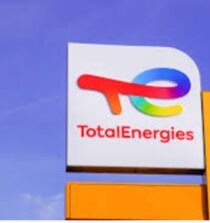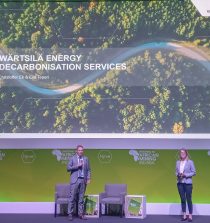By Oke Peter
The technology group Wärtsilä’s strategy for shaping the decarbonisation of the energy sector is strengthened with the introduction of the company’s Decarbonisation Services business model. The service utilises Wärtsilä’s sophisticated power system modelling and optimisation tools alongside in-house expertise to reduce power system emissions. It also ensures power availability with the lowest levelised cost of electricity. The ultimate aim is to help customers decarbonise their assets.
Initially, the service will focus on existing Wärtsilä customers in the mining and industrial sectors, as well as small-scale power utilities. It is carried out in long-term partnership with the customer and is outcome-based, with Wärtsilä’s success tied to the customer’s gains. Wärtsilä estimates, that its existing customers in the mining and industrial sectors have a carbon reduction potential of 460,000 tonnes per annum with initial optimisation projects.

Announcing the new service concept, Håkan Agnevall, Wärtsilä’s President & CEO said: “The need to address climate change is something we take very seriously, which is why we are utilising our unique capabilities to decarbonise power generation. We are combining our strengths in power systems modelling and energy system optimisation, with our flexible power generation technologies. In so doing, we can optimise overall energy costs and secure uptime and reliability of the power supply, while reducing emissions. Recognising that there is no single solution that suits all applications, we will work closely with each individual customer. Decarbonisation Services is one example of how we continue to move up the service ladder.”
Decarbonisation Services is designed to support customers in identifying and implementing the solutions needed to decarbonise their power systems, taking into consideration their long-term planning and CO2 emission reduction targets. Wärtsilä’s approach to meeting these challenges is holistic, both creating and executing the roadmap to reduce emissions. Power system modelling and dynamic simulations are used to identify the potential and create the decarbonisation roadmap. Implementation of this roadmap is carried out using the GEMS Digital Energy Platform to achieve continuous optimisation of the microgrid and all its assets. For example, fuel conversions, energy storage integration, and adding more renewables into the system can be part of the roadmap.
“We appreciate that customers around the world are working hard to decarbonise their operations. Decarbonisation Services can help speed this process, while ultimately delivering benefits in cost reductions, increased reliability, optimised efficiency, and realisation of their future vision, which is why we are ramping up our support with this new business model,” explained Sushil Purohit, President, Wärtsilä Energy and Executive Vice President at Wärtsilä.








I don’t think the title of your article matches the content lol. Just kidding, mainly because I had some doubts after reading the article.
I don’t think the title of your article matches the content lol. Just kidding, mainly because I had some doubts after reading the article.
Awsome post and right to the point. I don’t know if this is truly the best place to ask but do you guys have any ideea where to employ some professional writers? Thanks 🙂